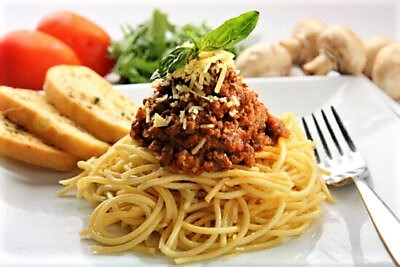
I recently saw this comment in a group chat on a social media website: “MSG – Does anyone still use this stuff?”
I can’t say I was surprised, but I was disappointed. Once misinformation gets out and into mainstream culture, people become almost “programmed”. It’s then difficult for them to see things factually.
With that in mind, let’s get some basics out of the way first. The idea that MSG causes “Chinese restaurant syndrome” has been completely – completely – debunked, denounced, and dismissed in virtually every credible study over the past 50 years.
Let’s dig deeper and go for some more subtle issues that have popped up on Google as common questions.
Is MSG worse than salt?
No, it’s better. Salt is sodium chloride. MSG is monosodium glutamate, so yes, both contain sodium, and people are advised to reduce the sodium in their diets. While both have sodium, they don’t have it in equal amounts. The typical sodium chloride you use in cooking and in the shaker has more sodium in it than MSG. Much more. Gram for gram, MSG has about 62% LESS sodium than regular salt.
Not kidding. If you did an even gram-for-gram swap of regular salt for MSG, you’d lower your total sodium intake right away. But should you do that? Not totally. That brings us to the next frequently asked question.
 What does MSG taste like?
What does MSG taste like?
MSG tastes salty, but not like table salt. It works differently in foods, too, because where regular salt gives foods a saltier taste, MSG gives food more “umami”. Umami is considered the “fifth taste”, after salty, sweet, sour and bitter. The umami that MSG brings to foods doesn’t make it taste saltier, it makes flavors more intense, so that broccoli tastes more like broccoli, and beef tastes beefier. And it does this with less sodium.
Should you just stop using regular salt? No, because both bring different qualities to food. But you can certainly use them together. Indeed, in cooking, if you use a blend of 50% MSG with 50% salt – which I do myself – you’ll truly enhance the flavor of dishes and still reduce the added sodium. That’s because, gram for gram, MSG has 2/3 LESS sodium than table salt (put another way, table salt has 3 times MORE sodium than MSG)! You can also ease into such a swap with, say, a 2-to-1 blend of salt to MSG and adjust as you like. Even better, research shows that swapping out some salt for MSG can be done while preserving the taste. The likely reason: glutamate enhances the taste of foods with umami – something regular salt can’t do. Better taste with less sodium? Count me in.
Is MSG bad for you?
No! MSG is safe! As a practitioner of over 30 years, I’d never recommend it if it weren’t. How am I sure MSG is safe? I look at the science:
- MSG is composed of only sodium and glutamate. You have both in your body at all times. All of us do and we always have.
- Glutamate is an amino acid, one of the building blocks of protein. It’s a “non-essential” amino acid though, not because we don’t need it, but because our bodies already make it! Our bodies make way more glutamate than you’d ever get from food or MSG, but there’s plenty of glutamate in our food, too.
What foods contain MSG naturally?
- Pretty much any food with protein, from plants or animals, will have some glutamate, even if it’s eaten without adding any MSG.
- Some of the prime sources of glutamate: tomatoes, including canned tomato pastes and sauce, mushrooms, and eggplant. Where would Italian food be without glutamate? Among animal foods, beef, milk, eggs, fish, and one of the highest sources of glutamate: parmesan cheese (there’s that Italian connection again).
- Other great sources are most beans, especially soybeans and soy ingredients, like soy sauce and fish sauces.
There are lots of reasons why Asian, Italian, and many other cuisines are so delicious. Their inclusion of foods high in glutamate, in particular, is likely one of the reasons. One thing is certain: MSG is not a new ingredient or a new taste. It’s been around forever.





